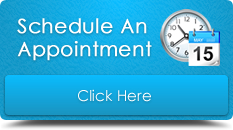
Even as the memory of late-pregnancy back ache fades into relative oblivion, the daily demands of infant and child care can continue to wreak havoc on new parents’ backs.
Infants don’t weigh much of course, but the smaller the baby the more paraphernalia parents find themselves shlepping around. Happily, this new Sherpa role need not result in chronic back pain. Being mindful of the requirements of the daily tasks can help protect your back from these unfamiliar routines.
Consider some of the ways your back is taxed as part of routine child care:
• bathing the baby
• changing and dressing the baby on a changing table
• Toting the baby in a baby carrier or backpack carrier.
• getting the baby in and out of a stroller or car seat
• transporting baby’s stuff in and out of car trunks
• lifting a baby or toddler from a play yard
Recent recommendations from the American Academy of Pediatrics that parents keep children in rear-facing car seats until they’re two, means that parents will be contorting, bending and lifting even longer. And of course your little one gets heavier with each passing month.
What to do to avoid back aches and pains?
The basic concept to remember, suggest physicians, is using legs and thighs, rather than arms, when lifting and carrying your baby.
“One of the most common causes of injuries is lifting the child the wrong way,” said Jennifer Solomon, M.D. a physiatrist (spine specialist), Women’s Sports Medicine, at New York’s Hospital for Special Surgery. “It’s about using the legs, and keeping the baby nice and close.
Repetitive bending at the waist or reaching with the arms, are common causes of back pain. Tall parents need to adjust surface heights to make the lift easier. If you share a baby carrier with a partner, be sure to adjust the straps and buckles so the carrier fits comfortably when it’s your turn to carry the baby.
Karen Sutton, M.D., assistant professor of Orthopaedics and Rehabilitation at Yale University School of Medicine, suggests that parents use baby carriers that can be tightened more around the stomach to increase support for your back. “As the baby gets older and heavier, you need to have good support,” she said. Wearing the right shoes—clogs, rubber-soled walking shoes— offers additional support as well.
Carrying the baby on your hip can trigger or aggravate back strain. Alternate hips, or switch to a different way of carrying the baby.
Anything that causes you to stretch your arms or twist your body is likely to lead to back ache.
Placing a child into a car seat needs to be done carefully.
“We all tend to reach over to the car seat,” said Dr. Solomon. “You need to get as close as possible to the seat, bracing yourself prior to lifting the child.”
Try to kneel on the rear car seat instead of standing outside; if you can’t, at least bend your knees and use your lower body to buckle in the baby. Similarly, when you’re putting the baby into the crib, or lifting him out, get as close as possible. And be sure to use your legs rather than your arms, for any of these lifting maneuvers.
However exhausted you may be, don’t neglect your own exercise regimen, or your own needs for adequate rest and nutrition.
“Post natal yoga or Pilates helps with keeping weight down after having the baby,” said Dr. Sutton. “Weighing less is better for back injury prevention.”
Remember, too, that you don’t have to be a beast of burden by yourself.
“Accept help from others,” said Dr. Sutton.

